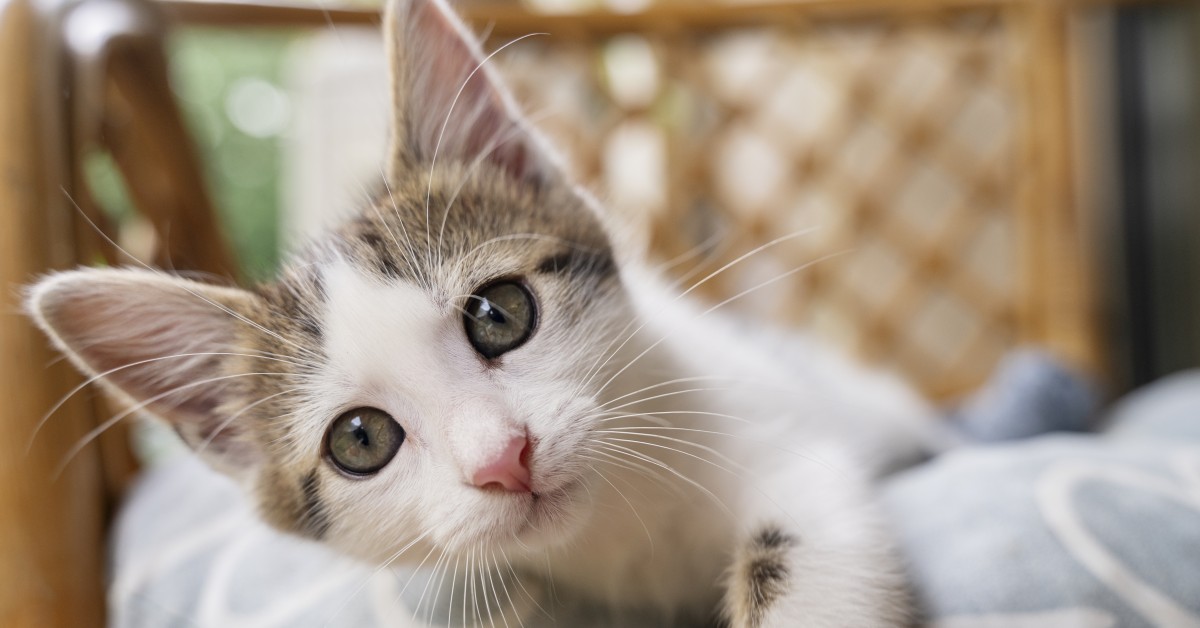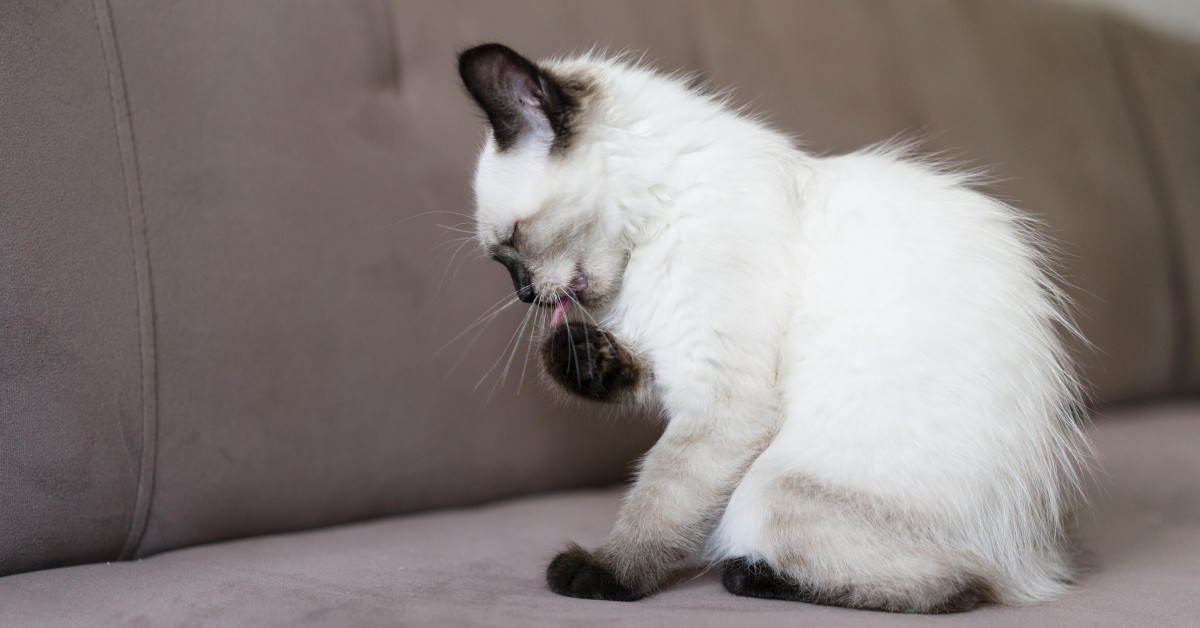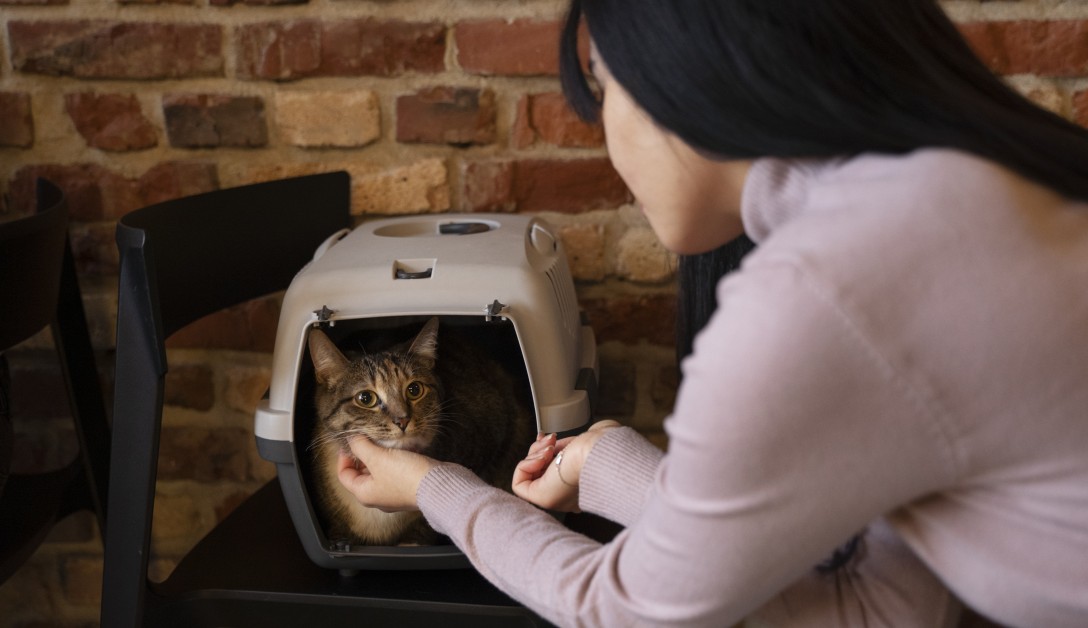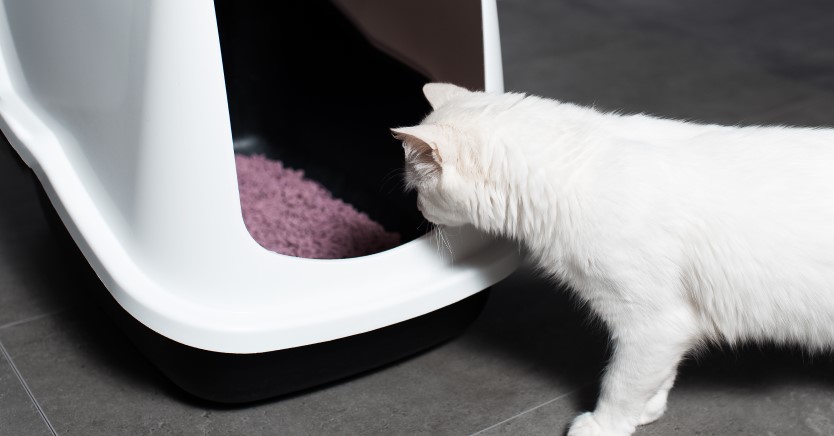Cat Communication: A Guide for Humans
Learn how your cat talks to you -- and how you can talk to your cat.

Your cat clearly wants to say something to you. It's making meowing noises, its tail is assuming various positions, or maybe it's even head-butting you. If only you knew what your cat was trying to express, surely you could meet its needs much more effectively. Fortunately, you can indeed learn how to understand "cat-speak," and even get your own messages across, once you know a few key things about cat communication.
Communicating Through Observation
Of course, communication is a two-way street -- and that goes for cats as well as humans. Before you even try communicating with your cat, you should have a basic understanding of how cats express themselves.
If your cat is like many other domestic kitties, it probably meows at you from time to time -- but do you know what those meows mean? Cats typically meow with other cats only during kittenhood; the rest of the time, they reserve this form of expression for communicating with humans. A long, sustained meow usually means that your cat wants to call your attention to something important, while a short, higher-pitched meow or trilling sound is more likely to be a simple greeting.
Cats also use body language to communicate with their owners. For instance, if your cat's tail is twitching, it's intensely curious or excited about something. A fluffed-out tail indicates fear or aggression, while an upright tail stands for simple contentment.
Communicating Through Blinks
If you think that you can win a cat's heart through sustained, wide-eyed eye contact, think again. Cats typically interpret an unrelenting stare as an attempt to challenge or intimidate. Instead, try gazing at your cat through narrowed, slowly blinking eyes.
Research has determined that cats close or narrow their eyes to express the equivalent of a human smile. If you want to tell your kitty that you love it, blink slowly without opening your eyes too widely. Don't be surprised if it returns this "I love you" gesture!
Communicating Through Sounds
Cats can learn simple words just as dogs can. However, they appear to react more to how humans say things than what is actually said. Be careful about your tone of voice when you speak to your feline friend. A harsh, low-pitched tone will convey anger or displeasure, while a high-pitched, soft, friendly tone will express love, affection, and approval.
If you really want to get your verbal message across as specifically as possible, combine commands with cat clicker training and body language. For example, if you want your cat to stay when you tell it to stay, you might make a pointing gesture toward the ground while saying "Stay." When the cat does the right thing, make a noise with the clicker and reward the cat immediately. Eventually it will respond to the gesture and verbal command every time.
Communicating Through Touch
Many cats love nothing more than to be held by their humans. However, different cats have different tolerances for this kind of contact, and your cat may even accept or reject it according to its daily mood. One non-threatening way to find out whether your cat wants to be touched is by holding out a knuckle for it to sniff out. If the cat rubs up against the knuckle, it's a sign that further touching is welcome.
Does your cat head-butt you? This behavior represents the ultimate in acceptance and friendship. Cats tend to rub their heads or faces against objects -- or people -- that they wish to claim as their own, as a way of marking their territory. You can now feel confident about petting your cat on most areas of its body, with the possible exception of its tail, belly, and back legs.
Communicating Through Odors
Cats have sensitive noses and can pick up some very subtle odors, including their own species' pheromones. When your cat rubs its face against something, it's depositing its own pheromones there. These pheromones don't just mark territory; they also promote feelings of calm, contentment, and familiarity. Better yet, you can actually use these pheromones to trigger positive emotions in your cat.
Seek out a pheromone diffuser called Feliway at your local pet store or online. This plug-in device emits a synthetic version of feline pheromones. Plug it in near your cat's bed or in any room where you'd like the animal to feel especially comfortable.
Worried About What Your Cat Is Saying? Talk to Your Vet
Sometimes feline communication, or a lack of communication, can indicate a serious health or behavioral issue. For instance, if your cat is howling or yowling, it may be in heat or feeling severe pain. Even purring can indicate discomfort or distress. By contrast, if your cat never responds to the sounds you make, it might have trouble hearing due to a congenital condition or ear trouble.
If your cat has changed the ways that it communicates with you for no clear reason, or if it expresses acute distress, bring it to a feline veterinarian for an evaluation. Prompt detection of a health or behavioral issue can help you address the issue as quickly as possible. Your cat will thank you for it -- in no uncertain terms!
Ready to start saving money on pet wellness care?
Then take a look at Mint Wellness, the pet wellness plan that provides fast reimbursement on routine pet care. Save on vaccinations, wellness exams, preventatives, dental, and more!
Learn More


